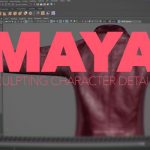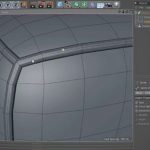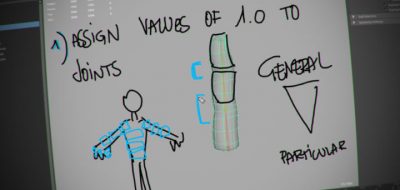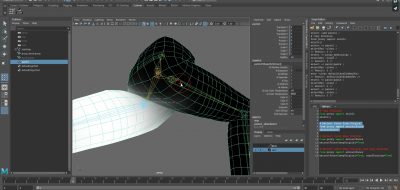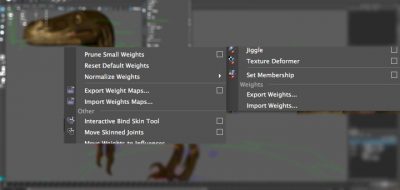A while back, Naughty Dog’s Character TD Hans Godard showed a short demo of his Skinning Converter in Maya. The Skinning Converter was a solver method that could convert deformation animation such as blend shapes, to skinned, weighted and joint driven animation.
Deformation Learning is based on Smooth Skinning Decomposition with Rigid Bones (SSDR)
Webber Huang’s Deformation Learning Solver is similar, offering a tool that is based on Smooth Skinning Decomposition with Rigid Bones. The AMC Siggraph 2012 white paper by Binh Huy Le and Zhigang Deng, introduced the Smooth Skinning Decomposition with Rigid Bones (SSDR) method, which was an automated algorithm to extract the linear blend skinning (LBS) from a set of example poses.
The idea was that the SSDR model could better approximate the skin deformation of articulated models as well as “highly deformable” models by a low number of rigid bones and a sparse, convex bone-vertex weight map.
Webber Huang’s Deformation Learning Solver, draws on the term “learning” from Machine Learning, as the system offers something that is more intuitive than straight decomposition.
The Deformation Learning Solver is noted as being similar to Hans Godard’s Skinning Converter, in that the Deformation Learning Solver can convert any deformation into skinning and can be used to reduce the amount of complexity involved with the deformations and storage spaces needed.
The tool can convert any deformation approximation to the joints and it is skinning-based. This allows there to be a savings in computing resources and a smaller data footprint.
The Intent of the Deformation Learning Solver:
- With Delta Mush, you can get the best of today’s program of weight results. Compared Heat Map, Geodesic Voxel this tip but not perfect automation solutions, SSDR at best only be considered semi-technical, but it match any Deformer to convert Skinning, more practical and Artist-Friendly.
- Performance optimization. As a Rigger, most experienced Deformer to use various combinations of some distortion effects, but poor performance affected the animation, why do not they turn into Skinning?
- Regardless of topology. Whether triangles, quads …… or non-standard models are applicable.
- Data compression. The future may encounter expression scanning needs, hundreds or even thousands of Blend Shape Targets Skinning will turn into significant savings in disk space.
- Data re-editing. Such as the Cloth into Skinning, bones can serve as secondary controller Cloth morphology secondary editing.
Webber Huang notes that he wrote a branch of that article, describing every stage of his research. It is written in Chinese, but if you’re interested, it can easily be translated: Deformation Learning Solver for Maya.

